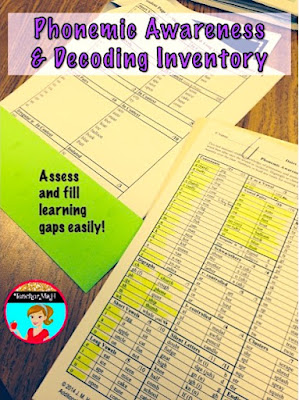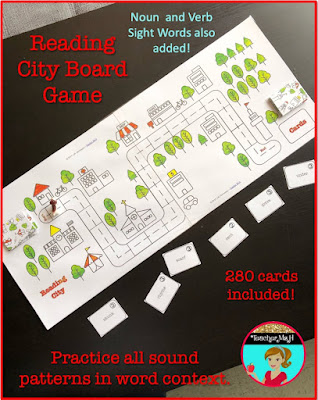What is the science of reading and how do you tell if something is aligned?
The science of reading includes important research on how students best learn to read. There is no one organization or curriculum that tells what is science reading aligned instead the term science of reading aligned means that instructional practices for teaching reading, are founded in reading research which includes phonemic awareness, phonics, fluency, vocabulary, and comprehension. However, since the first two concepts have been largely ignored much of what you will now see labeled as the science of reading, is about phonemic awareness and phonics.
What does the science of reading tell us about best practices?
Decades of scientific research on reading have determined that effective literacy programs include instruction in phonemic awareness, phonics knowledge, and how sounds combine. Yet most programs in the past few decades have only focused on word recognition, fluency, vocabulary, and comprehension.
Researchers have found that strong reading comprehension cannot occur unless decoding skills are first in place. One important model is called Scarborough’s rope, which is based on research by Dr. Hollis Scarborough, who narrowed down the complex skills required to be an effective reader. On one strand of the rope, we have skills that include phonemic awareness and phonics that enable decoding, as well as fluency, and sight word recognition.
On the other strand, we have reading comprehension, which includes skills like understanding vocabulary, language structures, and verbal reasoning. Truly balanced literacy programs should focus on both strands, and the Science of Reading aims to bring these necessary skills to the forefront. Without both strands, many students are left behind, hanging onto a frayed, thin rope, unable to climb and progress their reading skills.
The National Educational Advocacy Panel summarized the key science of reading research findings as pictured below.
Why is the Science of Reading suddenly trending in Education?
- One in five students, or 15-20% of the population, has a language-based learning disability.
- 38% of all fourth-grade students are “below basic” reading skills. They are at or below the 40th percentile for their age group. – National Assessment of Educational Progress.
From this data, we can see that guided reading and reading workshops, and popular anthology-based reading programs are not working. This is because, the last few decades in education have focused on whole language strategies under the guise of “balanced literacy,” primarily working on reading comprehension skills and ignoring the foundations of reading that include phonemic awareness and phonics. Sometimes you will see some phonemic awareness or phonics sprinkled in or used for intervention but it isn't nearly enough.
Proponents of the science of reading methods are saying why not start with foundational skills for every student (the first strand) for all readers before moving on to comprehension skills (the second strand) so that any gaps in instruction do not occur from the start.
You might be wondering why some students still learned to read under whole language and balanced literacy programs? It’s because they were able to decipher the reading code on their own, but what about students who need explicit instruction in this area? Also, why would we wait for students to figure out the reading code when we could explicitly teach it upfront assuring all students know how to decode from the get-go?
How did we end up ignoring decades of research showing we should be teaching reading another way besides emphasizing fluency and reading comprehension skills? Unfortunately, curriculums were created using a lot of whole language strategies and publishers did not want to entirely revise their curriculums to reflect current research not to mention curriculum companies lobbying for their products to be adopted by various states even if they didn’t fully align to best practices or current state standards.
Now that we know that reading programs lack an emphasis on these important foundational skills, the science of reading aims to rectify this problem. Students with a solid foundation in phonics and phonemic awareness will be better equipped to decode unfamiliar words, be stronger spellers, and ultimately be more fluent and independent readers.
The science of reading and phonemic awareness versus phonics.
Simply put phonemic awareness is understanding that a word is comprised of individual sounds. Phonics is knowing how various sounds can be spelled.
Further, phonemic awareness is the ability to hear and manipulate the individual sounds (phonemes) in words. It is a pre-reading skill that children need to develop before they can begin to learn phonics. Phonemic awareness includes skills such as identifying and isolating individual sounds in words, blending sounds together to form words, segmenting words into individual sounds, and manipulating sounds within words.
Phonics, on the other hand, is the understanding that letters and letter combinations represent sounds (phonemes) in words. It involves the ability to match sounds to letters and use this knowledge to read and spell words. Phonics instruction typically begins with teaching letter-sound correspondences and then progresses to more complex skills such as decoding multi-syllable words and recognizing common spelling patterns.
How can I get started with science of reading strategies and activities in my own classroom?
As a reading interventionist and a former elementary teacher, I always supplemented whatever reading program I was given with phonics and phonemic awareness instruction. I initially had training in my credential program and then at my first school on the importance of phonemic awareness and phonics but was given very little in the way of hands-on resources to help my students. So, I created my own.
The first resource I made helped me to discover gaps my students had with phonemic awareness. This resource checks to see if students understand the alphabetic principle and it also determines if they can isolate individual sounds/phonemes and read them in context. Diagraphs, short and long vowels, Y as a vowel, vowel teams, diphthongs, l and r-controlled vowels, common rimes, and word endings are also included.
In the regular ed classroom, I gave this assessment to any student who was not reading at grade level, and then I pulled students by skill level into small groups where they could receive instruction on their missing skills.
When I began teaching reading intervention, I scrapped the F&P guided reading program that was previously in place as we weren't seeing much progress in students. I used this phonemic awareness and decoding inventory as an initial evaluation for each student referred to me. Then I followed up with the resources I created below, as well as Scholastic Phonics books, Explode the Code, and decodable texts. Students began graduating from intervention within months, versus years, thanks to the science of reading.
These are the phonics posters I made, explaining all of the phonemes, their pronunciation, and their phonetic spellings to explicitly teach my students the reading code. Each poster also contains an opportunity for students to practice decoding the target sounds. I displayed them permanently in my classroom and would go over them with all students. When students needed further review, we would refer back to the posters again.
For small group work, and center practice I created reading games that included practice with all phonemes, blends, vowel combinations, and digraphs, so students could practice and apply skills learned within my phonics posters and have the opportunity to decode words with these patterns. Recently I added noun and verb sight words for additional sight word recognition practice. Also, this resource comes with two board games. The small one is pictured below, and there is also a larger version comprised of 4 pages.
Finally, as I begin to accumulate these resources, I bundled them on TPT, so that others teachers and their students could benefit from them. I am currently adding more items as I complete additional training on the science of reading, so it's advantageous to get the bundle now before the price goes up with future additions. A recent addition to this bundle is my onset and rimes, making words game. Students absolutely love to play this game and they get to practice decoding as well.
Jumpstart your students decoding and reading success start starting here:
Not ready to dive in? Try this free sample from the bundle and phonics posters above. It contains all phonemes and sounds with example spellings, as pictured below. Just sign up for my newsletter to receive access to this freebie and others in my subscriber library. Sign-up is at the top of this blog!








No comments:
Post a Comment